
- Home
- News
- Analysis
- States
- Perspective
- Videos
- Education
- Entertainment
- Elections
- World Cup 2023
- Features
- Health
- Business
- Series
- Economy Series
- Earth Day
- Kashmir’s Frozen Turbulence
- India@75
- The legend of Ramjanmabhoomi
- Liberalisation@30
- How to tame a dragon
- Celebrating biodiversity
- Farm Matters
- 50 days of solitude
- Bringing Migrants Home
- Budget 2020
- Jharkhand Votes
- The Federal Investigates
- The Federal Impact
- Vanishing Sand
- Gandhi @ 150
- Andhra Today
- Field report
- Operation Gulmarg
- Pandemic @1 Mn in India
- The Federal Year-End
- The Zero Year
- Premium
- Science
- Brand studio
- Home
- NewsNews
- Analysis
- StatesStates
- PerspectivePerspective
- VideosVideos
- Entertainment
- ElectionsElections
- Sports
- Loading...
Sports - Features
- BusinessBusiness
- Premium
- Loading...
Premium
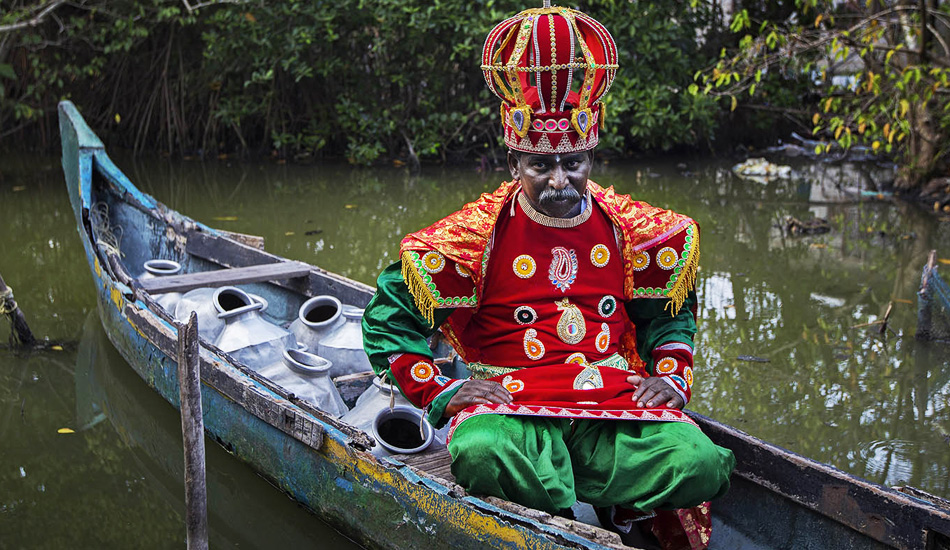
Why the fading echoes of a stamping drama from the coast of Kerala are hard to ignore

S Alex has not opened his trunk since he last performed in a Chavittunatakam (The stamping drama) in Ernakulam in 2010. The rusted trunk, kept under his iron cot, has costumes that this 65-year-old once used: a velvet mantle, heavy-collared blazer with fancy buttons, headgear, hand gloves and a couple of wigs. Alex knows that he will not be using the costumes anymore, but he doesn’t want...
S Alex has not opened his trunk since he last performed in a Chavittunatakam (The stamping drama) in Ernakulam in 2010. The rusted trunk, kept under his iron cot, has costumes that this 65-year-old once used: a velvet mantle, heavy-collared blazer with fancy buttons, headgear, hand gloves and a couple of wigs. Alex knows that he will not be using the costumes anymore, but he doesn’t want to throw them out. There was an emotional bond as he played the roles of many European kings and heroes wearing these costumes only. Working as a security guard at an ATM counter in Ernakulam, Alex today feels that the characters he once immortalised still live inside the trunk.
A theatrical folk art of the Latin Christians, Chavittunatakam was introduced to the coastal areas of Kerala by the Portuguese missionaries in the late 16th century AD. ‘Chavittu’ in Malayalam means stamping and ‘Natakam’ means drama. The performers stamp their feet on the wooden stage rhythmically in tune with Chenda and other musical instruments while they act and sing. The dance-drama uses colourful western attires, headgears and masks of European opera. If you look at Chavittunatakam as an art form, you will understand that it owes a lot to ancient art forms like Koodiyattam, Koothu and martial arts such as Kalaripayattu.
Composed in Senthamil (pure classical Tamil), Chavittunatakams are transmitted orally from one generation to the other. “The first texts of famous Chavittunadakam such as Karalman Charitham, Janova Charitham and Brijitha Charitham were written in Vattezhuthu [a syllabic alphabet once used for writing Tamil and Malayalam] on palm leaves. Written in Tamil musical metres, these texts contain rhythms such as Ethuka, Mona and Iyaippu Mooran Alapadai and Adukkumozhi,” TP Prahesh, a research scholar, told The Federal. As Chavittunatakam exhibits violent masculine traits and the male characters show heroic qualities, hard instruments like Chenda, Madhalam and Ilathalam are used.
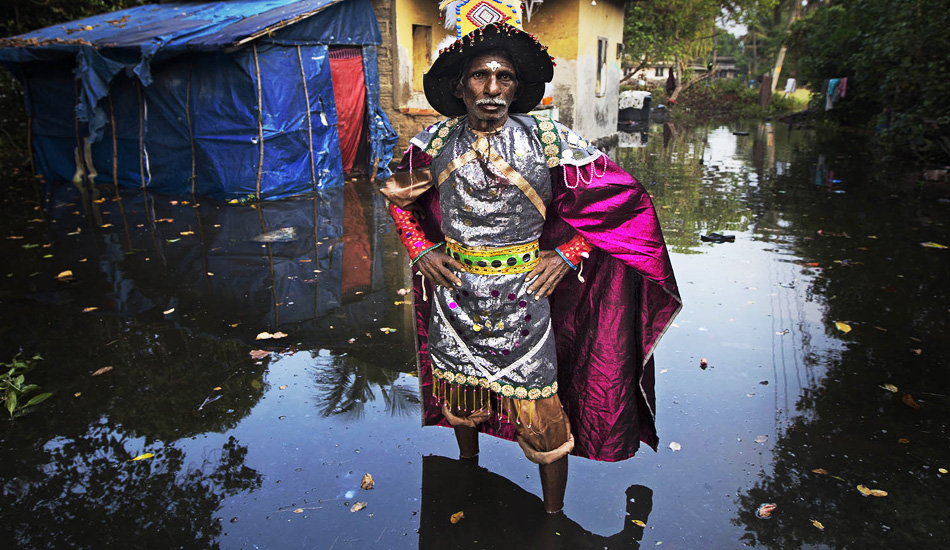
“Disciplined and definite dance movements, gymnastic flexibility of body, foreign narrative elements, interpretative possibilities for the director, devotional pleasure to holy men of Christianity, and the partnership of a whole local populace for the presentation undoubtedly enriches this theatre. In short, Chavittunatakam presents a cultural harmony of all the above,” he added.
The proselytisation activities of the Portuguese Padroado across the southern coasts of India created the community of ‘Latin Catholics’ – Roman Catholics with Latin rite – in the 16th century, according to scholars Geetha K Wilson and Priyadarsanan Dharma Rajan of the Ashoka Trust for Research in Ecology and the Environment, Bangalore, India. “Novel methods for religious education were invented by the Padroado, largely Jesuits, to teach the predominantly illiterate, low caste Latin Catholics. One such innovation was the creation of Chavittunatakam, an adaptation of an unidentified indigenous performance to include the tradition of miracle and morality plays from mediaeval Europe,” wrote Geetha and Priyadarsanan in their research paper titled ‘Nummada Kaaralmaan (Oh, Our Charlemagne): An introduction to the representation of Charlemagne and (his) paladins in Chavittunatakam of Kerala’.
Some scholars believe that Chinnathambi Annavi is the founder of Chavittunatakam in Kochi. A statue of Chinnathambi was installed at Gothuruth Island in 2013 as a tribute to the Tamil dramatist.
The Karalman Charitham (The chronicle of emperor Charlemagne) is considered the first Chavittunatakam. Even though Chavittunatakam was performed in the coastal villages of Ernakulam, Alappuzha, and Kollam districts of Kerala, it is now limited to a couple of villages in Ernakulam. Gothuruth, an island in North Paravur in Ernakulam, is one among them. A blend of music, dance, and drama, the forgotten Chavittunatakam revisited the social and cultural spaces of the Malayalis when the Mammootty-starter Kutty Srank won the national award for the best feature film in 2010. Directed by Shaji N Karun, Mammootty played the lead role in the Chavittunatakam about emperor Charlemagne in the movie. Even though the movie was not exclusively based on this 16th theatrical dance-drama, a partial take on it made many come forward and talk about the art form. Art historians say the rich and elaborate way of costume resembling the European operatic tradition is the most expensive part of Chavittunatakam.
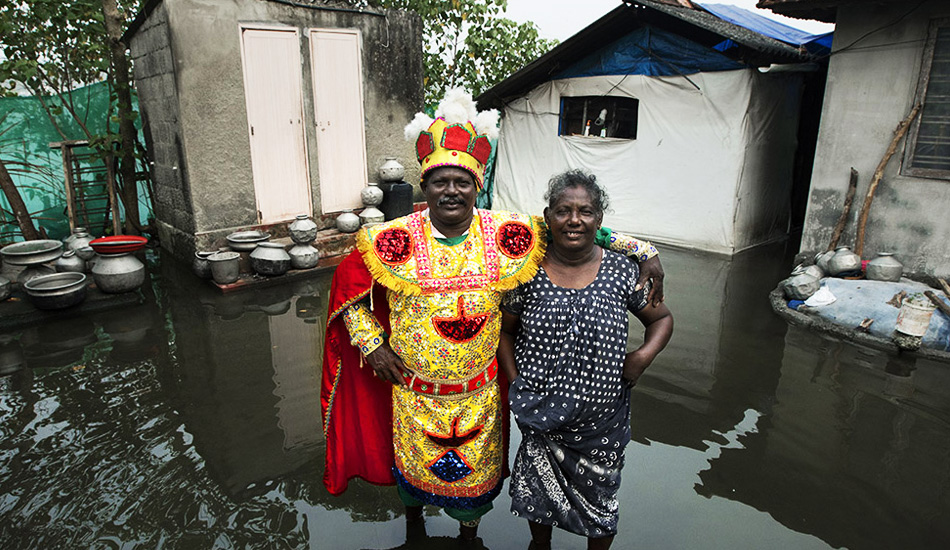
Latin-rite Catholics, comprising about 32 per cent of the Kerala Catholic population, are largely made up of Hindu communities who were converted in the 16th and 17th centuries by Portuguese missionaries, according to scholar Corinne G Dempsey. “Although a number of high-caste Hindus also converted to Catholicism, most Latin Catholics are from low-caste fishing communities. Syrian Christians, long established as a high-ranking ‘caste’ within Kerala society by the time of the Portuguese arrival, did not normally intermarry with members of the Latin Catholic community,” wrote Corinne G Dempsey in his book titled Kerala Christian Sainthood: Collisions of Culture and Worldview in South India.
Increasing (production) cost and lack of sponsorship bring in stumbling blocks to Chavittunatakam. “We need at least three or four lakh rupees to stage a play. The performers are mostly fishermen from the local village. They won’t be able to manage such a huge amount. The costume also costs a lot because of the shiny and expensive nature of the attire. We need to spend from our pockets for each performance. It is difficult to survive. Many artists left because they were not able to make ends meet,” said Silosh, a fisherman-performer, who lives in Chellanam, a coastal village in Ernakulam.
Silosh, who performed in a Chavittunatakam five months ago in Kochi, said many artists have been living a miserable life due to lack of employment and poverty. “Earlier, there were many artists, but today there are only 200 artists around among which many are non-performing artists,” said the 35-year-old. However, Britto Vincent, a performer-director of Chavittunatakam, has been trying his best to preserve this art form.
Britto, who started performing at the age of 16, has written the script for many Chavittunatakam in Malayalam. “As a language, Tamil was prominent when Chavittunatakam was first introduced in the coastal regions of Kerala in the late 16th century. The oral texts in Tamil were handed over from generation to generation since the late 16th Century. In the 1950s, many started writing scripts in Malayalam. I too followed it. I have written more than ten Chavittunatakam so far,” said Britto, who is the president of the Cochin Chavittu Nadaka Kalari. Britto has been providing training to students in Chavittunatakam as it is a competition item in the school youth festivals of Kerala.
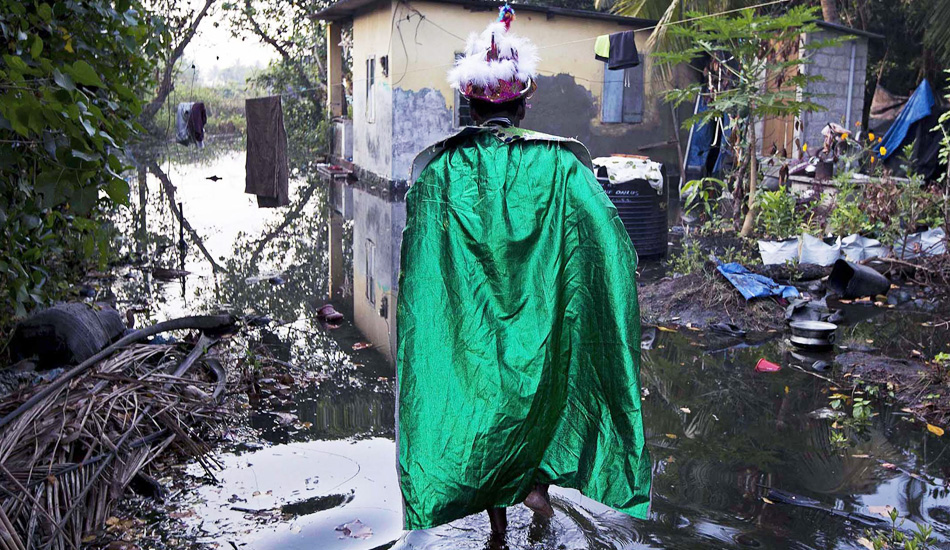
“I have been giving training to students on Chavittunatakam for a long time. Children are interested in this form of art. I want to preserve the art form and I will do whatever I can to do it,” he added.
The earlier stories of Chavittunatakam were inspired by Biblical themes, saint plays and Carolingian gestures. Despite its religious roots, the church had renounced this performance by the early half of the 20th century, according to scholars Geetha and Priyadarsanan. “Chavittunatakam has its origins in the multi-ethnic aesthetic preoccupations of the Dravidians and is considered to be the ancestor in all neo-colonial interactions in the field of theatre. Today, Chavittunatakam is a cosmopolitan musical drama which has grown out of its Catholic origins and has become a community art, producing a wide spectrum of performances encompassing indigenous, Shakespearian, European and Hindu epic stories,” they said.
In 2015, artist-photographer KR Sunil happened to witness a make-up session for artists of a Chavittunatakam troupe in Kochi. He met many rough and tough fishermen who played various roles in the Chavittunatakam. Many told him about the miserable life that they undergo. Sunil visited the houses of many artists in Ernakulam. It was shocking, many houses of the Chavittunatakam artists were surrounded by water. He took the photographs of the Chavittunatakam artists in their costumes in the backdrop of their houses. A collection of 32 photographs are being displayed at Kashi Hallegua House on Jews Street in Mattancherry.
“The water level is increasing due to climate change. The artists are poor fisherfolk and they can’t leave their villages. They told me that in some houses, water never recedes. These artists are having a miserable life,” said Sunil, whose works have been exhibited as part of ‘Sea A Boiling Vessel’ presented by Aazhi Archives, a collective of artists, writers and scholars engaged in education and art projects through art-making, writing, curating and publications. Curated by Riyas Komu, Sea-A Boiling Vessel is the first exhibition of Aazhi Archives as part of a long term multidisciplinary project that brings together artists, performers, scholars and intellectuals to contemplate together on the cosmopolitan pasts previously unheard-of, and the fluid futures of Kerala. The first edition brings together 18 artists from different fields and the exhibition will conclude on April 30.
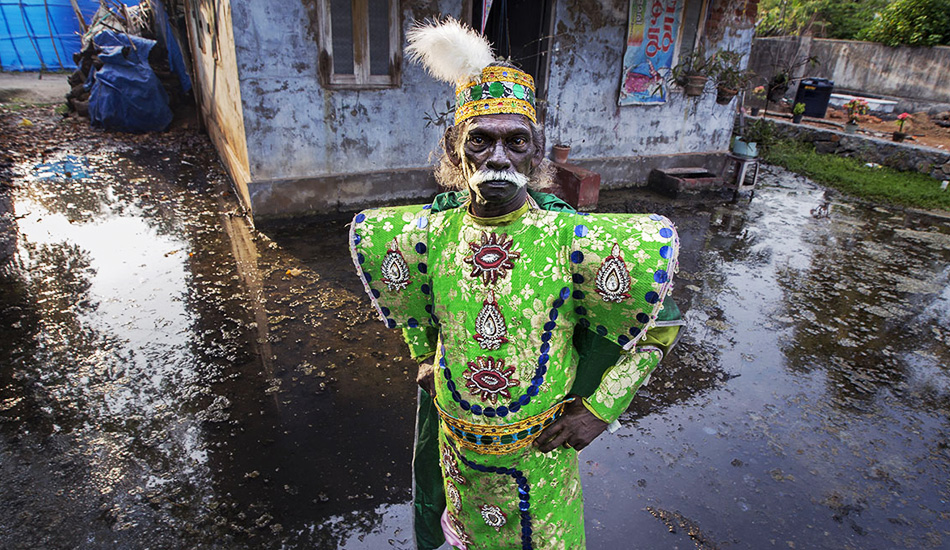
The ongoing exhibition of photographs of Chavittunatakam artists in their costumes evoked tremendous response. “When I went to see the Chavittunatakam artists in Chellanam and other coastal villages, I realised that many live in houses surrounded by water. Even though many of these senior artists immortalised many European kings on the stage, they are today struggling to make ends meet,” said Sunil.
“This is the first time the photographs of Chavittunatakam artists have been exhibited with all the seriousness they deserve. Many senior Chavittunatakam artists were shot in the backdrop of their houses surrounded by water. The documentation is a great tribute to this declining dance-drama. They reveal the uncertainty and the apathy of the Chavittunatakam artists,” said Silosh.

